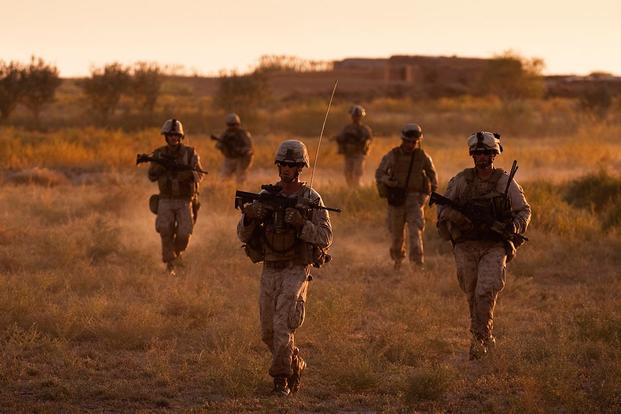Marines in ground combat jobs aren't confident their skills will help them land post-military careers, new survey data shows, and the Corps wants to hook them up with tools that can change that.
Leathernecks serving in aviation and logistics military occupational specialties, or MOSs, saw promise that what they're doing in the military is setting them up for civilian jobs later on, officials with Manpower and Reserve Affairs found. The findings were part of the service's first Exit and Milestone Longitudinal Survey, which Marines at different career points were asked to complete in fiscal 2018.
Marines in the infantry -- whether officer or enlisted, on their first enlistment or preparing to retire -- are less confident than their peers in terms of what they'll do after the Corps, said Maj. Kerry Hogan, the Marine Corps' first-ever survey officer. That data helped highlight a trend in the infantry community that the Marine Corps needed to address.
"There's research already being done and that has been done specifically regarding the ground-combat element MOSs," Hogan said.
She began tracking down some of that research so leaders could provide it to Marines leaving the service.
Related: Gen. Berger Could Revolutionize Marines' Career Paths. Here's What He Wants to Change
One of those projects was taking place at the same time the results of the fiscal 2018 exit survey, which Marines at different career points are asked to take, began rolling in. The Defense Department's Transition to Veterans Program Office is studying the civilian jobs best suited for those serving in different MOSs, Hogan said.
The data allowed her to spot a trend she could take to the transition office to enlist their help and have them look at jobs best suited for those in ground combat roles.
"It allowed us to say, 'These are the things that have translated, at least right now, to your MOS,'" Hogan said. "The key is that feedback loop. It's getting Marines to take the survey so they realize their participation actually resulted in something."
The exit survey replaced the Marine Corps' old retention surveys, which had expanded over the years to nearly 120 questions. When developing the newer survey, Hogan said she wanted to develop something that didn't take a lot of time to complete and that could provide leaders with clear analysis about trends they might need to address.
Marines are asked to take the survey when they hit certain milestones in their careers. That includes boot camp, reenlistments or officer promotions, career designation, or when they're exiting the service.
The surveys provide "essential feedback and key information to better understand personnel satisfaction regarding career opportunities, leadership, performance management, diversity and work-life programs," an administrative message announcing the change states.
And it's not mandatory that Marines take the surveys, which is by design.
"If people get ordered to take the survey, it becomes like any other check-the-box type of thing. And you will see that response rate go up, but the reliability of the data and accuracy and data actually goes way down," Hogan said.
Those leaving the service had the lowest participation rate in 2018 at 11%. At the other career milestones, the participation rate was much higher, she said, ranging between 25% and 35% response rates.
Higher participation rates will allow the Marine Corps to really isolate what might be happening within specific communities, not unlike how Hogan spotted the trend in civilian job prospects among those in the infantry.
"When we start parsing the [groups] down to a very specific targeted population, that's when we need those higher response rates," she said.
-- Gina Harkins can be reached at gina.harkins@military.com. Follow her on Twitter @ginaaharkins.
Read more: Marine Commanding Officers Caught Driving Drunk Receive Reprimands












